Just 23 kilometres west of Córdoba city is the small town of Almodóvar del Rio. Its fairy tale like castle, perched on top of a ridge, overlooking a meander in the Rio Guadalquivir is easily seen from miles away as you travel between Córdoba and Seville on the A431 road. Below the castle, a band of dehesa, ecologically maintained parkland, separates it from the whitewashed town beneath and the whole is set in gently rolling hills covered in citrus and olive groves. It is an idyllic setting.
By Nick Nutter | Updated 5 Apr 2023 | Córdoba | Villages |
Login to add to YOUR Favourites or Read Later
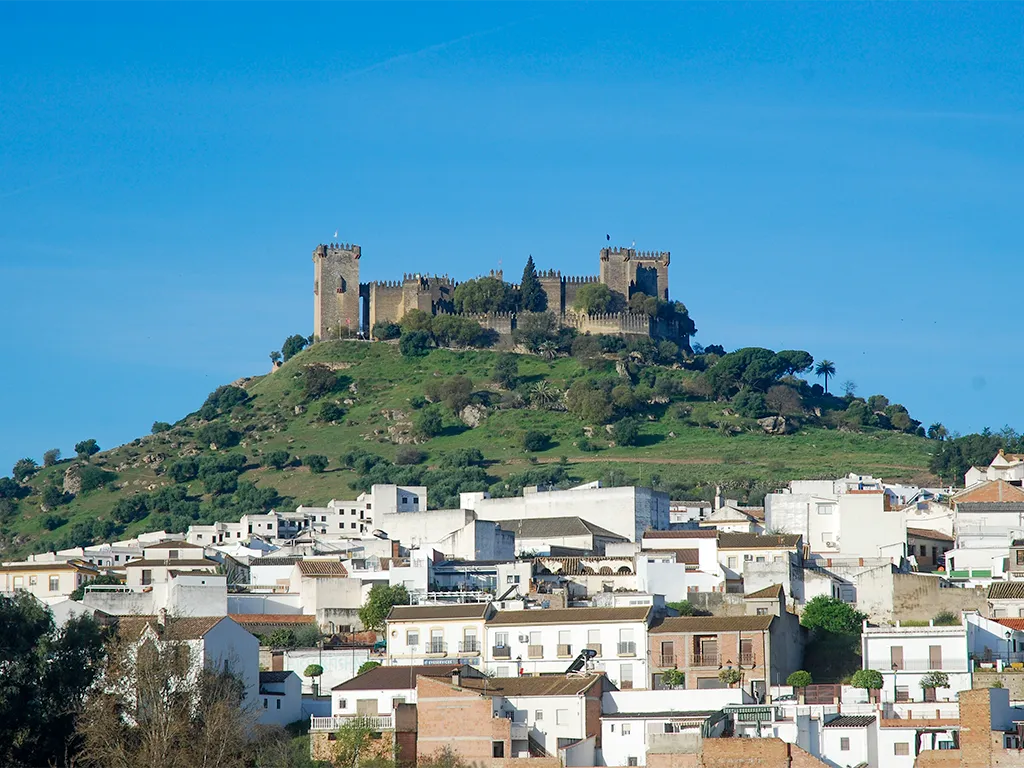
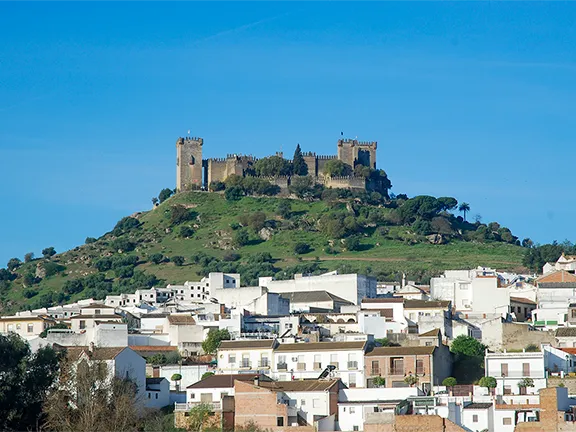
Almodóvar del Rio
Julie and I decided to stay in Almodóvar del Rio for four nights in self-catering accommodation to give us time to explore the town, its castle and the surrounding area. We ended up in a pretty apartment with panoramic views of the surrounding countryside and castle from the terrace; a great place for morning coffee and magical as the sun set in the evenings behind the ramparts.
Almodóvar del Rio is a traditional Spanish town. Visitors should be aware that the siesta is taken very seriously and restaurants do not open until 8 or even 8.30 in the evening. Many are closed altogether on Mondays and Tuesdays.
The town is built on the side of a hill. Streets are typically narrow and some are stepped so walking is the best option. There is plenty of street parking as you enter the town.
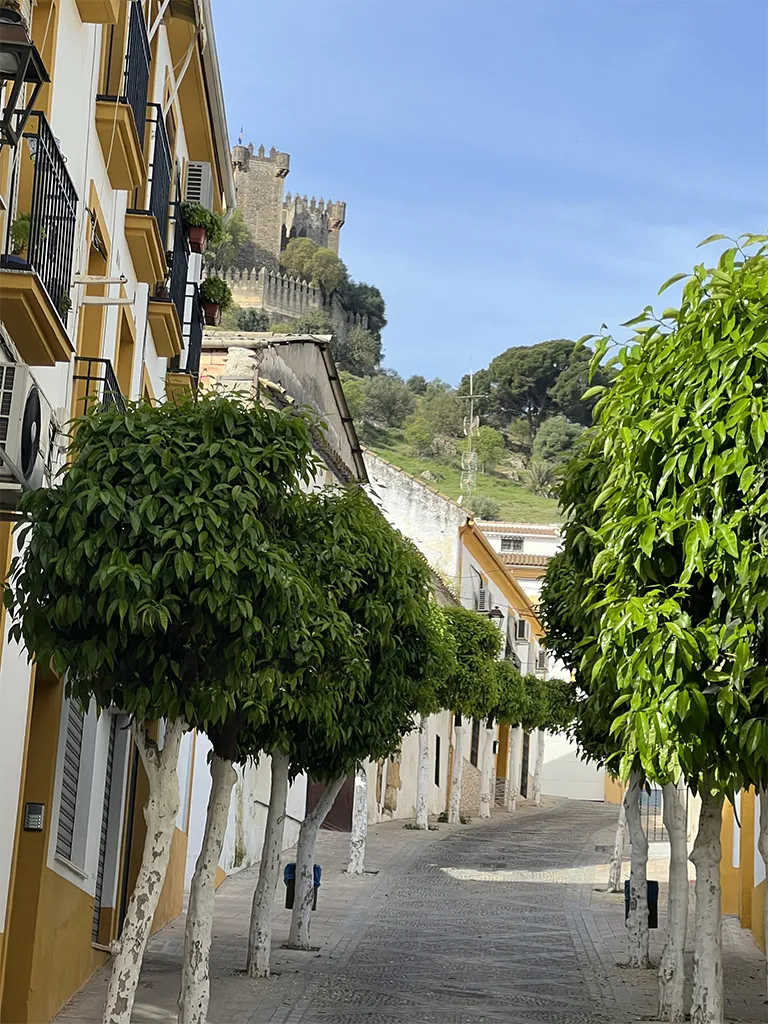
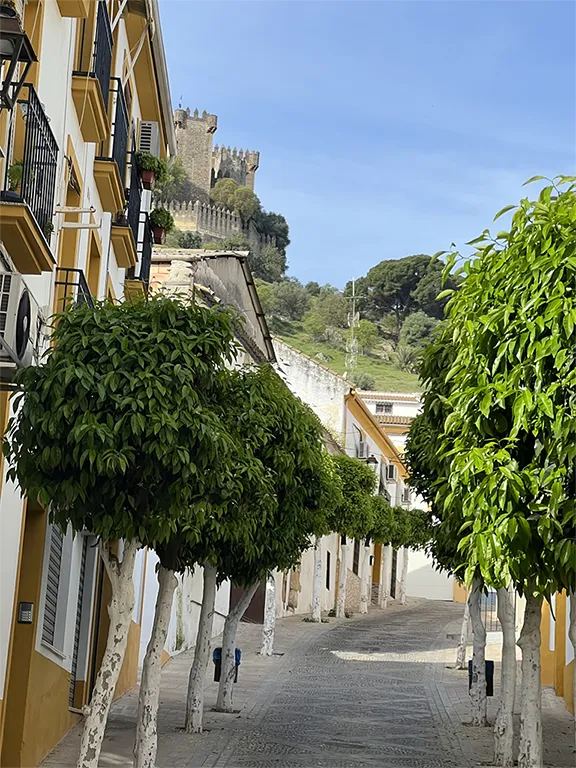
Steep streets in Almodóvar del Rio
Our first port of call was the visitor’s centre which was close to the apartment and handily situated on the main road into the town. Two ladies welcomed me, both were very friendly and helpful, one, Irene, had spent some time in Scotland and spoke perfect English. I left the centre loaded with leaflets and information about the town and area. A small exhibition of inscribed Roman pottery gave me a foretaste of what to expect from the archaeological museum and, together with the maps, an idea of the importance of the town in times gone by.
The area has been inhabited by humans since Homo heidelbergensis hunted and scavenged in the Mediterranean woodland of the Rio Guadalquivir valley over 500,000 years ago. The first settlement was an Ibero-Turdetan oppidum, possibly called Carbula, if the Roman geographer Pliny has it right. Its inhabitants, descendants of the Tartessians, traded olive oil and grain with the Greek, Phoenician and, later, Carthaginian settlements on the Atlantic coast using small river craft to carry their produce. Strabo states that large cargo ships could navigate the Baetis (Guadalquivir) some 500 stadia as far as Hispalis (Seville). From there, smaller boats, some fashioned from whole logs, could paddle the remaining 700 stadia to Corduva (Córdoba).
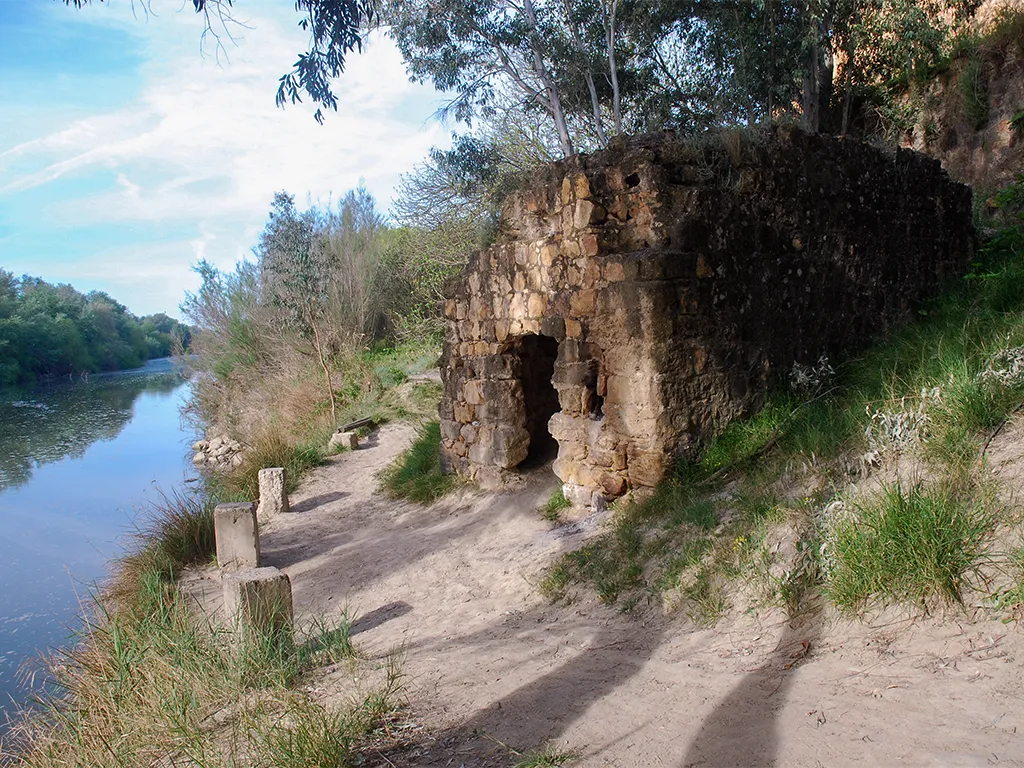
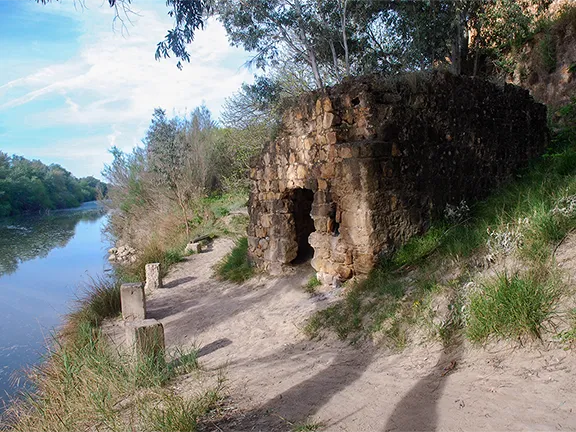
Portus Romano Almodóvar del Rio
After the Romans occupied Baetica, Carbula was integrated into the territory of Corduva. They established an amphorae factory and built a pier, Portus Romano, alongside the Guadalquivir, below the settlement on the ridge. The remains of the pier storage house and wharf are still there. The design of the river boats also improved; they were now built from planks. There is a very pleasant riverside walk that takes you from the town, beneath the high speed and local train lines to the Roman pier. The rough track between Seville and Córdoba was paved and became the Via Corduva – Hispalis. Carbula became an ever more important link between the two great cities of Baetica and the scattered rural population of the Guadalquivir valley.
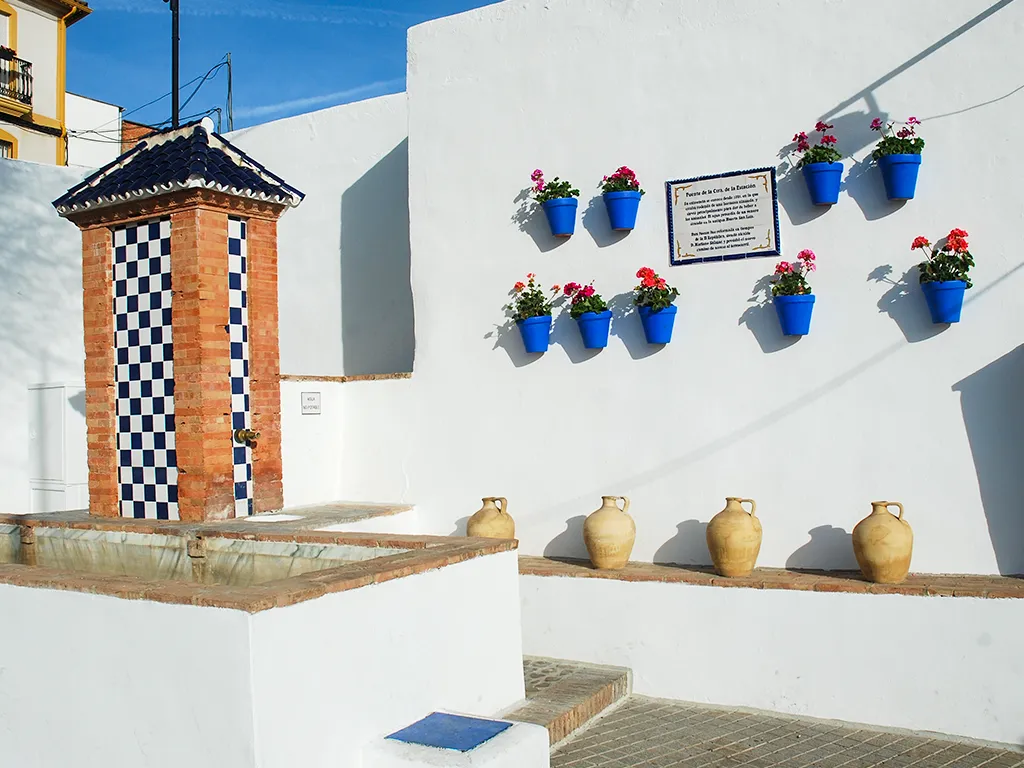
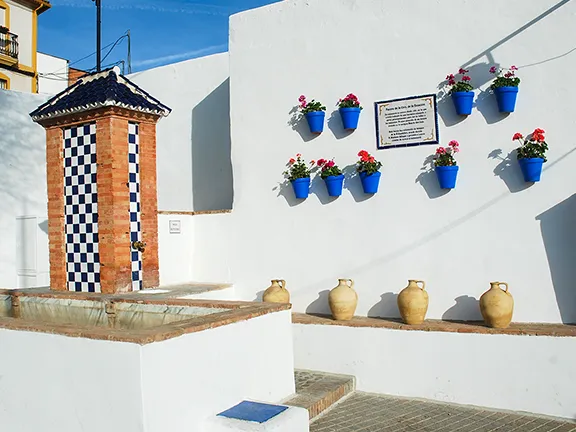
Town Fountain Almodóvar del Rio
The next mention of the town comes in 740 AD, when the Muslims built a tower on the ridge. They called it Al-Mudawvar, which is where the modern name, Almodóvar, originates. The chronicles of the time mention a village surrounding the tower that, over the centuries, expanded. During the 8th, 9th and 10th centuries, Almodóvar was part of the province of Córdoba. During the taifa period, in the early part of the 11th century, Almodóvar was part of the Carmona taifa and then the taifa of Seville. The Almoravids reintegrated Almodóvar into the province of Córdoba and then, during the 12th century, Almodóvar became part of the Almohad court of Seville.
Almodóvar was peacefully taken over by Ferdinand III of Castile in 1240, a period of severe decline for the Almohad dynasty, who, by 1248, were left with only the Emirate of Granada as a last bastion of Muslim domination in al-Andalus.
In the meantime, the castle was maintained and expanded by the Muslims and later, in the 14th century by various Christian overlords. In 1360, Pedro I used the castle as a royal residence. The village below the castle continued to expand, the economy still depending on agriculture and the town’s strategic position between Seville and Córdoba.
By 1513, the town was as prosperous as any in the region and it was used as security for the purchase of Fuente Obejuna, thereby becoming the property of the crown. In 1629, Felipe IV sold Almodóvar to Don Francisco del Corral y Guzmán, a knight of the Order of Santiago. The town became part of a feudal fiefdom administered by the Order of Santiago.
The following 250 years were a period of political and social unrest in Spain and the fortunes and population of Almodóvar declined culminating in an emigration of a large part of the population in the 1970s.
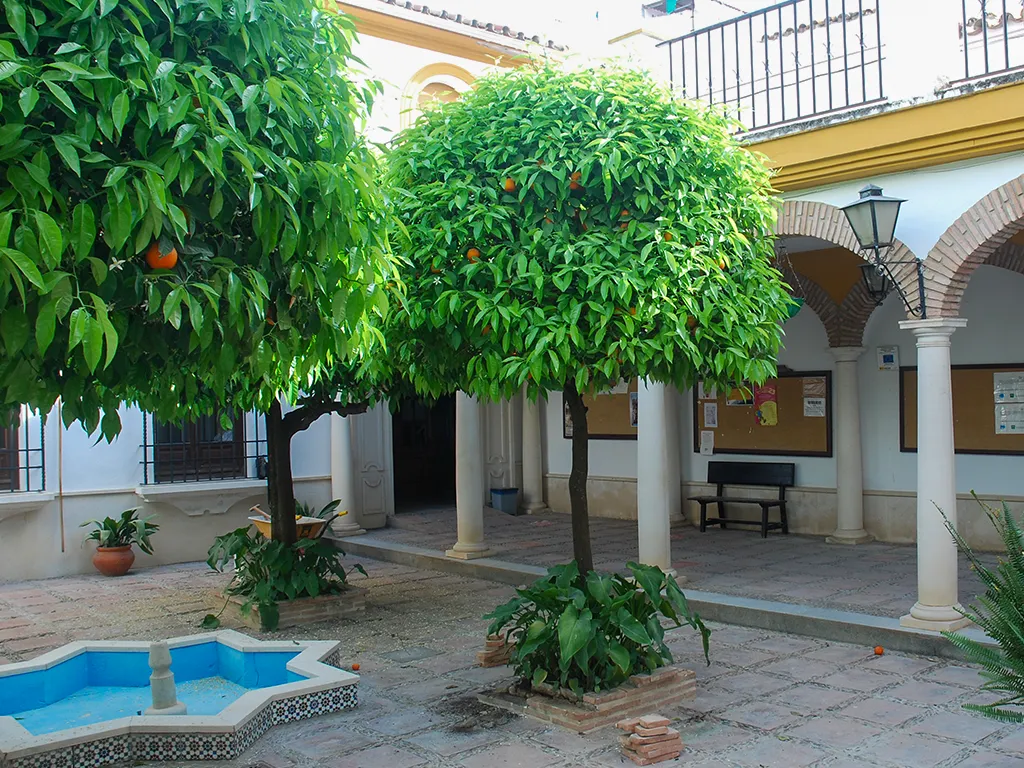
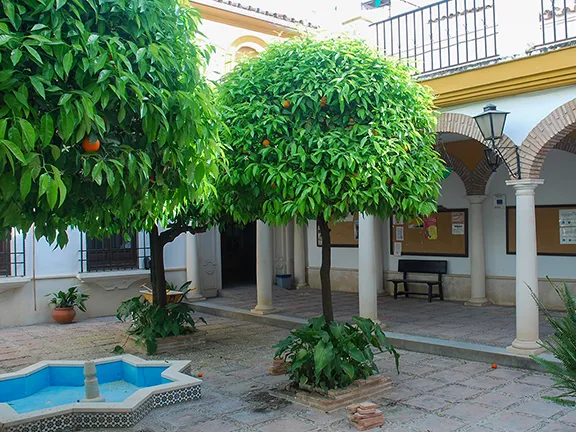
Ayuntamiento Almodóvar del Rio
I had a conversation with an old man in the town that could have taken place at any of the inland towns of Andalucia. He was bemoaning the lack of work in the area and the constant drain of the younger population to the cities for both work and entertainment.
As with many of the inland towns and villages, Almodóvar del Rio is trying to rejuvenate its fortunes by attracting tourists and, I have to say, they are doing a pretty good job of it.
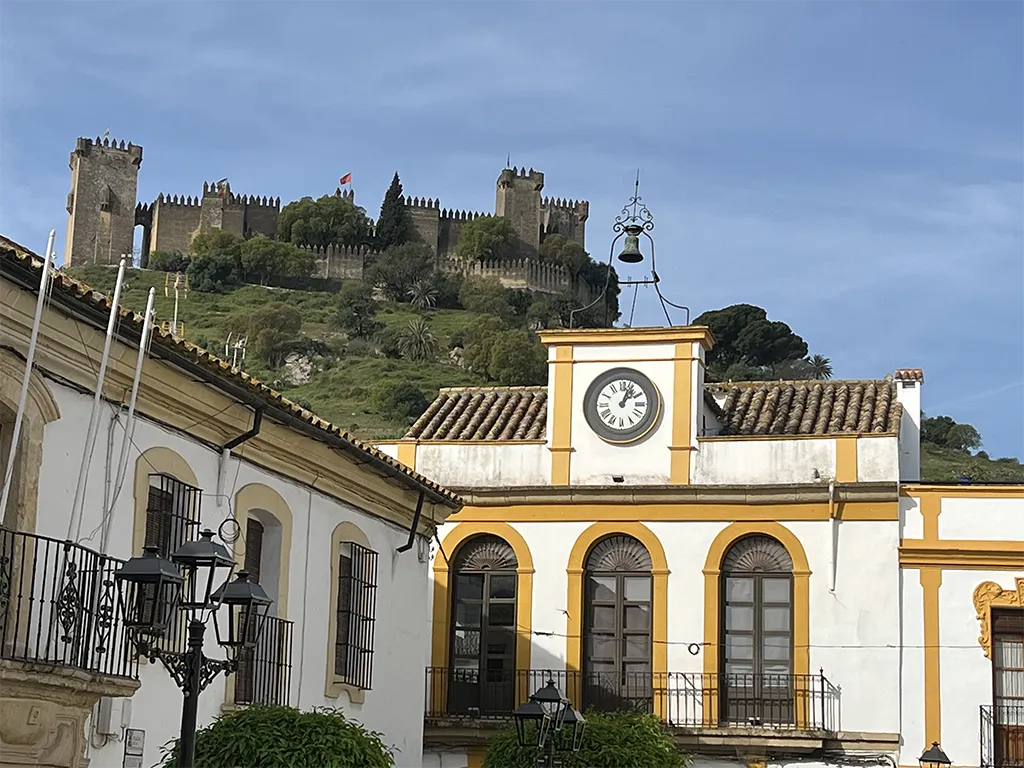
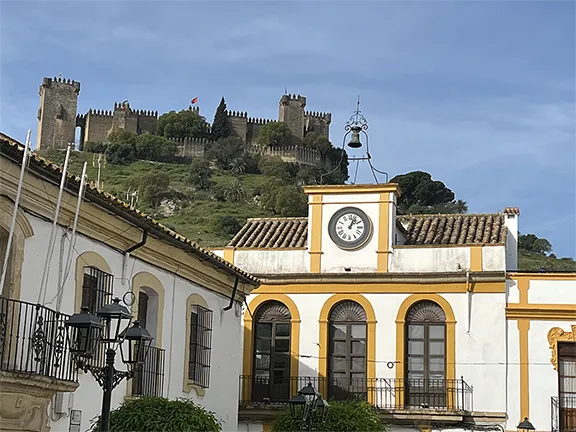
Biblioteca and Castle Almodóvar del Rio
The castle is the town’s crowning glory. It was virtually rebuilt during the first years of the 20th century by its owner, the eccentric 12th Count of Torralva. He employed an architect, Adolfo Fernandez Casanova, who also restored Seville Cathedral, and 800 workers for a total of 36 years to restore the castle to its former state. Unusually for that period, the restoration is sympathetic, following, as faithfully as possible, the original plan and construction techniques and features. The only incongruity is the neo-Gothic main residence built in the courtyard, a home still inhabited by the present day owners of the castle. The investment paid off for the town when, in 2016, the castle featured in part of the seventh season of Game of Thrones.
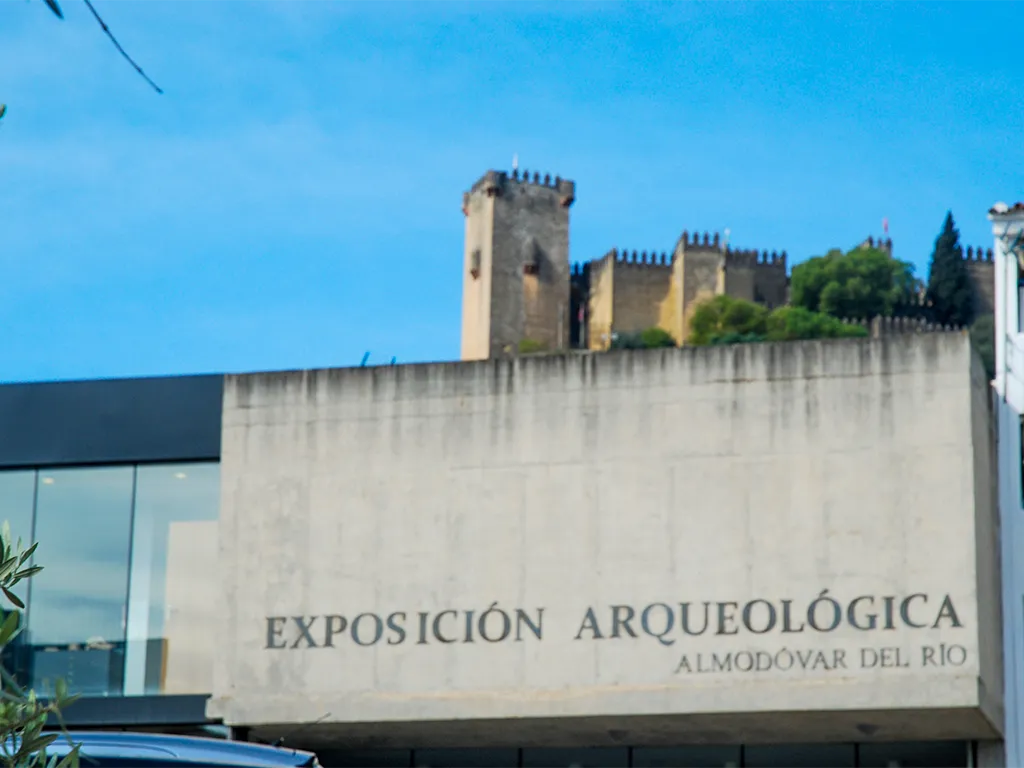
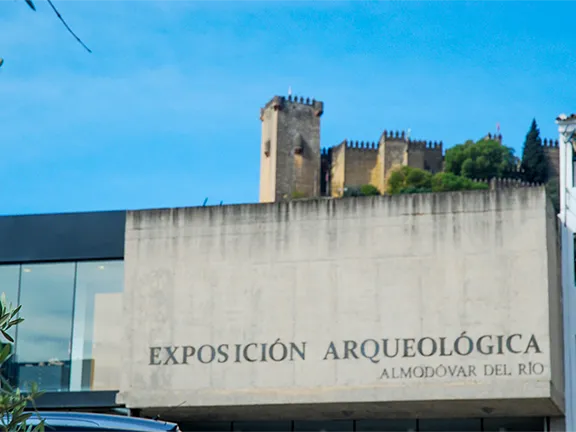
Archaeological Museum Almodóvar del Rio
The most recent project to attract visitors to Almodóvar del Rio is the archaeological museum. It consists of two floors, the ground floor with exhibits of the first stone tools, dating back over 500,000 years, through the Neanderthal, Mesolithic and Neolithic periods with the Roman and Muslim periods covered on the first floor. I was surprised to learn that I was the first English visitor to the museum. ‘What this year?’ I asked, ‘No, ever’ the young curator replied.
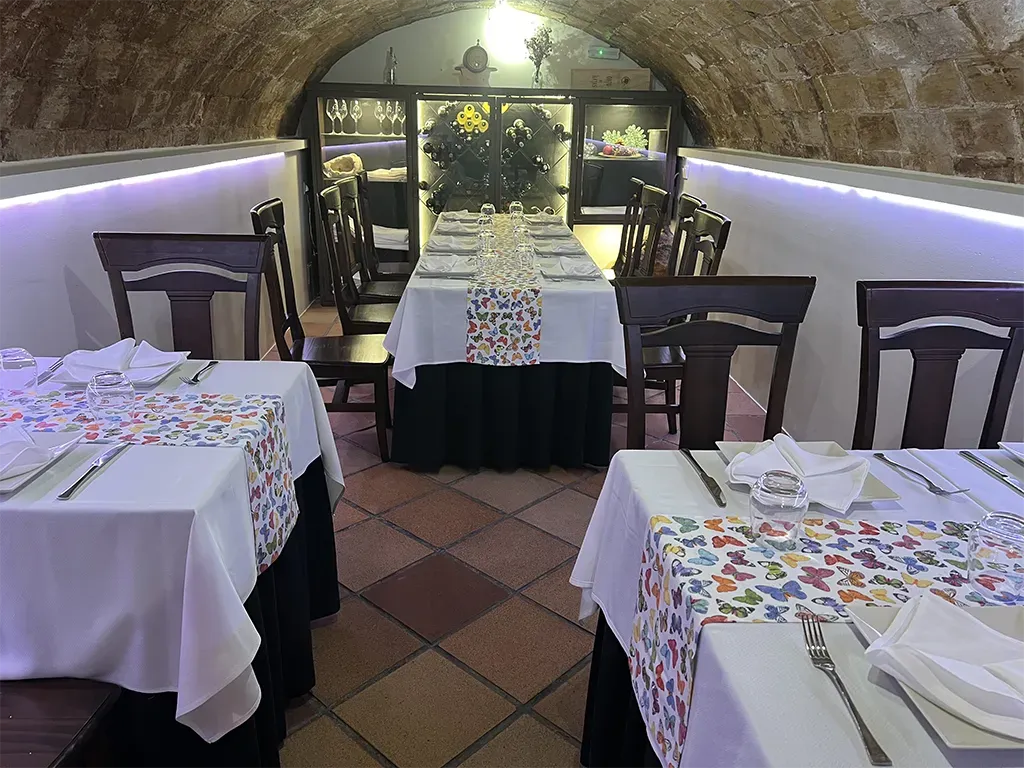
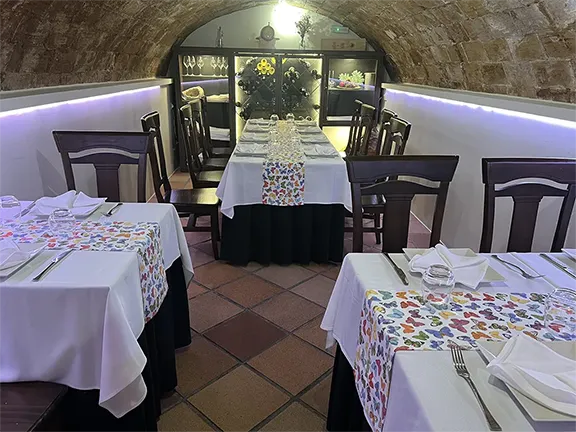
Taberna del Ateneo Almodóvar del Rio
There are a surprising number of café bars scattered about the town. Many are on the main road into town. We were fortunate to find Taberno Ateneo in Plaza de la Constitucion. The restaurant is in the bodega beneath the taberno. Crisp, white table cloths and sparkling glasses on tables laid out in the brick vaulted chamber set the scene. To one end is a wine rack with a good selection of local and national wines. The owner explained that the bodega is hundreds of years old and was once a storeroom hung with chorizo, morcilla, dried peppers and garlic and filled with barrels of ale and wine. The menu featured local fare and the food was as good as you will find anywhere. We returned the following evening to make sure.
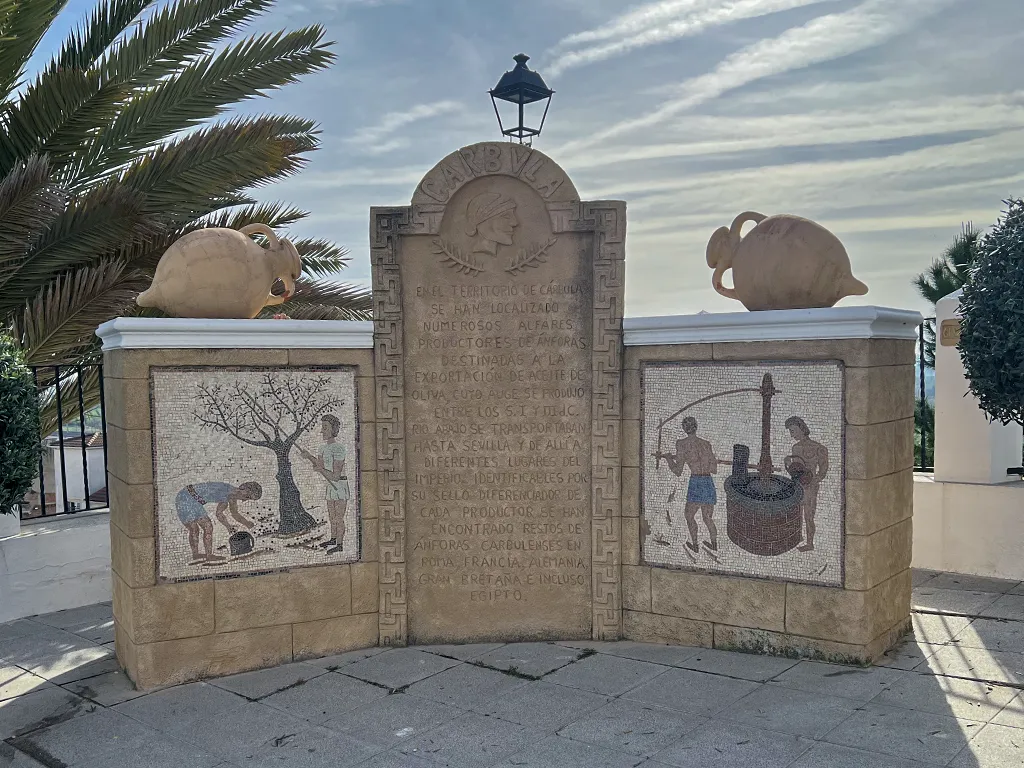
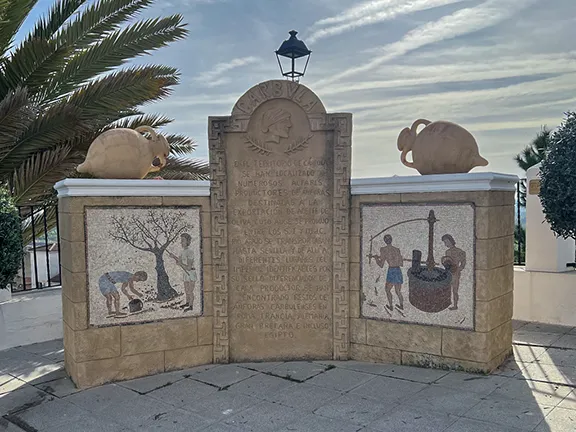
Mirador Almodóvar del Rio
The locals are justifiably proud of their cuisine to such an extent that they had a local sculptor produce a memorial to the gastronomy of the area that now sits at the mirador overlooking the fertile valley of the Guadalquivir.
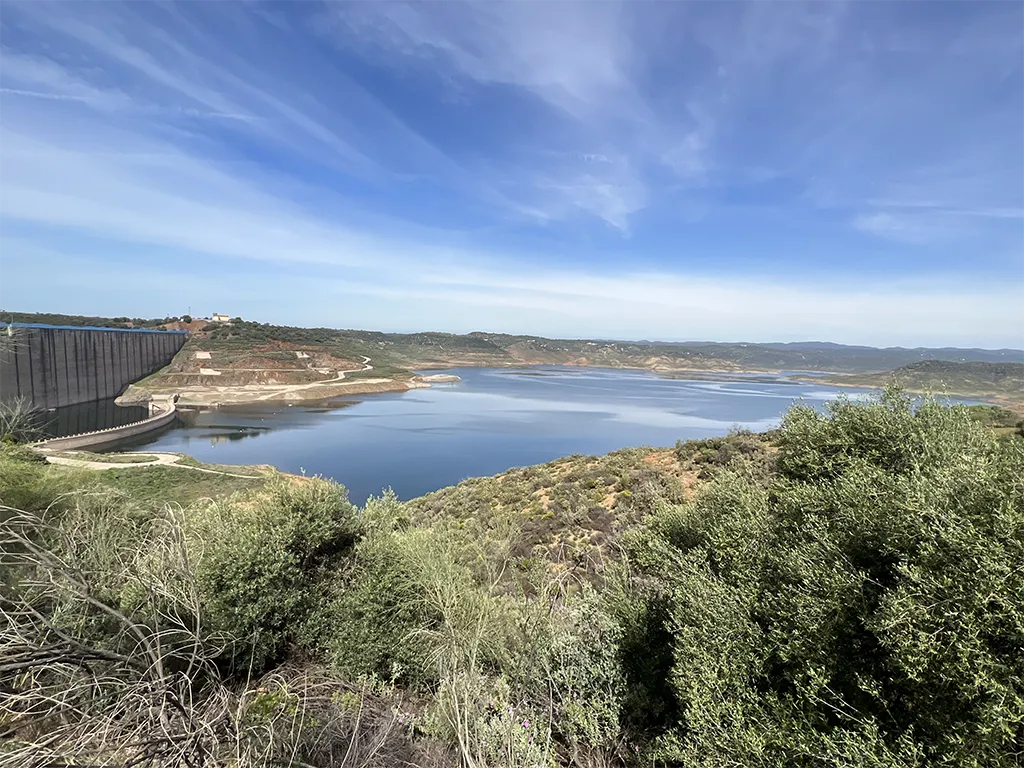
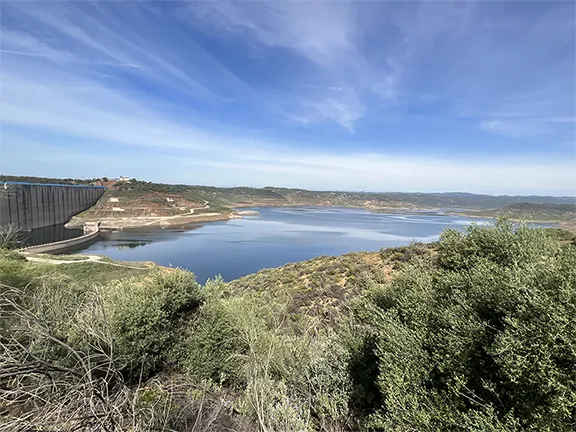
Naturaleza la Brena Almodóvar del Rio
On the northern edge of town is a good road that takes you to Centro de Actividades en la Naturaleza la Breña and Club Náutico de Almodóvar. The centre overlooks the La Breña II reservoir. There you will find all sorts of water sporting activities including sailing, canoeing, swimming and paddleboarding. There is a beach alongside the reservoir and a restaurant with panoramic views across the embalse. The centre also has information about other activities in the wider area such as multi-adventure activities, climbing, zip line, bicycle rental, archery, guided tours, restaurants and trips on an ecological solar boat.
Whilst not strictly part of the history of the town, the collection of sewing machines and bullfighting posters is the passion of a local resident who, since 1980, has built up a collection of over 200 sewing machines from ten different countries, dating back to 1860. It is a fascinating assemblage and includes an ‘Elna’ design from WWII and a very rare special edition Singer machine of which only 12 are known in Spain. Interspersed on the walls are more than 500 bullfighting posters produced from 1887 to 1970. The exhibition is in a private house on Calle Perez Galdos and only open by appointment. Call at the visitor’s centre for contact details.
Another resident of the town, Manuel Cañete, is a nationally renowned taxidermist. He is especially known for his work on bulls, achieving a most lifelike effect. His studio come workshop is on Calle Maria Zambrono and again arrangements to visit should be made through the visitor’s centre.
Almodóvar del Rio has been known for its ceramics since the Roman period and the Pérez Pastor brothers have taken advantage of that to create a tourist attraction in their ceramic workshop where they make reproduction Roman and Arabic lamps, Roman amphoras, Iberian and Andalusian dishes, and vases. They have also recreated a traditional ceramic oven.
In a similar vein, Angel Vargas produces mosaics. He uses techniques both ancient and modern in his own designs using marble, river and natural stone and various enamels. Some of his more intricate work inspired by the Byzantine and classical worlds contain 10,000 pieces per square metre. His workshop is on Calle Pairejas.